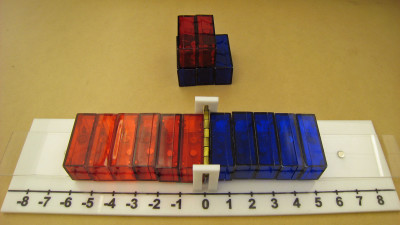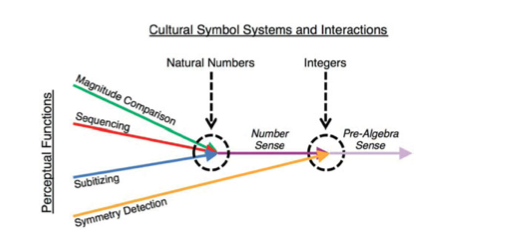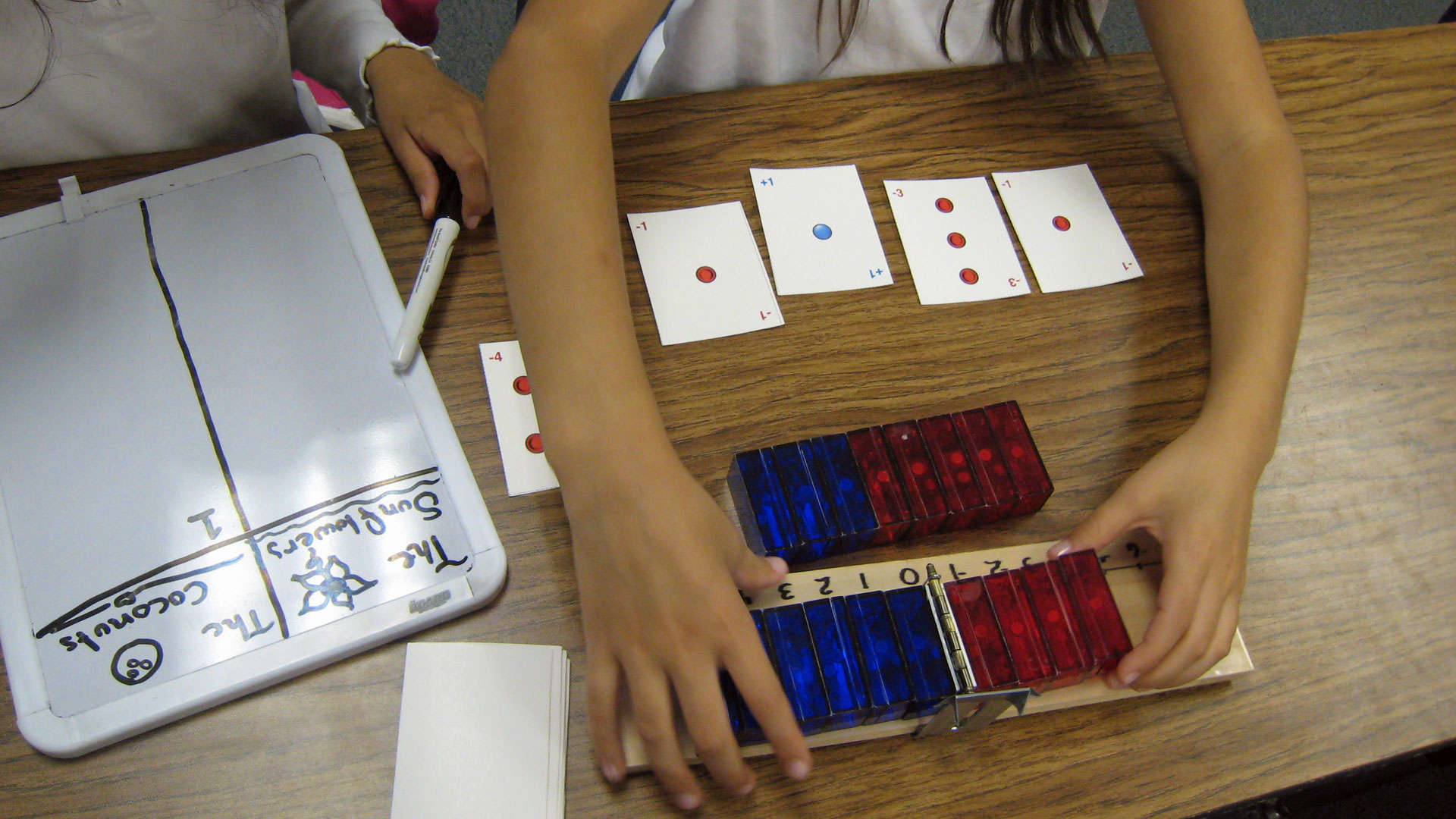There's a part of the brain that enables us to perceive magnitude -- we can compare loudness when hearing different tones or compare the number of dots in a group at a glance. Neuroscientists have identified this region responsible for perceptual comparison (the intraparietal sulcus) as linked to symbolic comparisons, including integers in math. That discovery led scientists to realize that symmetry plays a big role in how humans compare integers.
Building on this background research, Stanford education researchers tested a teaching strategy explicitly focused on using symmetry to teach integers to fourth-graders. They wanted to see if recruiting the visual symmetry parts of the brain would improve students’ facility and understanding of the concept. Their findings, published in "Cognition and Instruction" in May, indicate that teaching with symmetry could have a big impact not just on students’ understanding of integers, but also on more advanced concepts that go well beyond the scope of instruction as well.
“Finding a fundamental discovery in neuroscience about how the brain is processing these numbers led us to realize the instruction needs to change,” said Daniel Schwartz, director of Stanford’s AAALab and one of the authors of the study.
When people are asked to find the distance between a negative integer and a positive integer oriented in a blank space, they are able to do so much more quickly when the numbers are spaced around zero. For example, people can more quickly calculate the difference between -2 and 3 than they can -5 and 3. Furthermore, an fMRI scan of the brain while this calculation is taking place reveals that visual symmetry is in play.

In math instruction “nobody had been focusing on the significance of zero, which is the reflection point,” Schwartz said. There are two common instructional methods used to teach integers in current curricula: the first uses distances on a number line, asking students to jump forward and backward between integers. The other uses the idea of cancellation, where students are taught that positive and negative numbers represent opposite quantities that cancel each other out.




